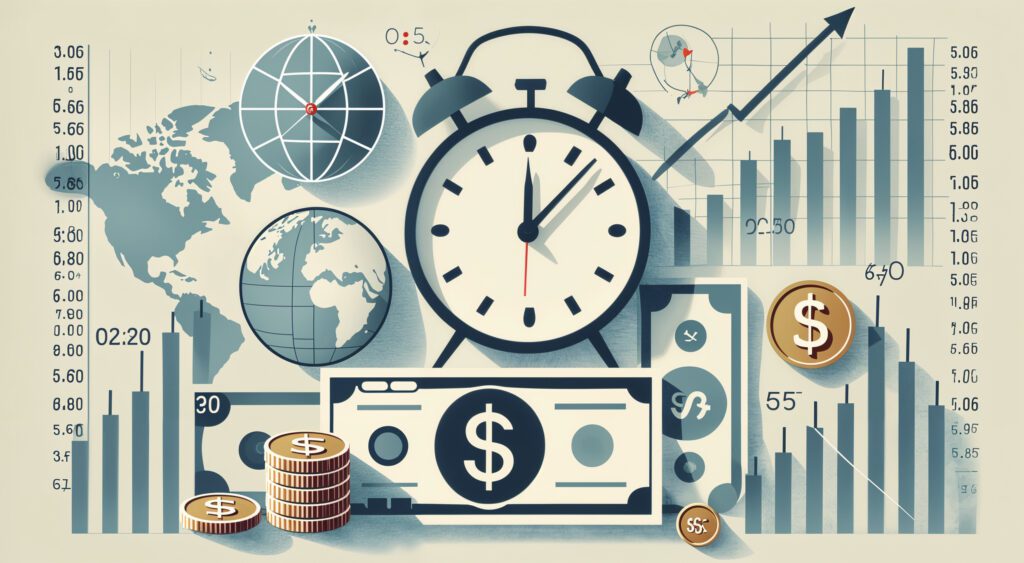America’s national debt now exceeds $31 trillion. And many people are worried the U.S. may soon default on its financial obligations. If this happens, the country’s economy and currency could be sent into a tailspin.
In this post, you’ll learn more about the national debt, what drives it, and why there are major concerns right now. You’ll also be given ways to safeguard your investments and work with a thinking partner to navigate the uncertainty!
Understanding US National Debt
As the U.S. government invests in essential services and programs to maintain a well-functioning society, it often relies on borrowing to meet its financial obligations. This borrowing fuels the national debt, and that debt continues to grow when the government’s expenses exceed the revenue brought in from taxes and other sources.
The general rise in national debt can be attributed to several factors, such as fluctuating tax rates and economic downturns that lower the income of U.S. citizens and businesses. By understanding the key areas of federal spending, you can further insight into the main causes of the national debt and the role it plays in maintaining today’s government programs and services.
What Causes National Debt?
Below are some key areas where the federal government spends its funds. If you’re interested, you can dive deeper into federal spending on USAspending.gov, where you’ll find information about specific purchases made by the U.S. government.
Income Security: This spending supports programs like unemployment benefits, federal employee retirement and disability, and food and nutrition assistance. During the COVID-19 pandemic, spending in this area increased due to relief efforts like the CARES Act and the American Rescue Plan Act.
Social Security: This spending supports programs such as retirement, disability insurance, and supplemental security income payments for qualifying beneficiaries.
Health: This spending area focuses on healthcare services, health research and training, and consumer and occupational health and safety initiatives.
Military Spending: This category is dedicated to funding military and defense-related activities to help ensure national safety and security.
Medicare: This budget item supports health insurance programs that cater to specific groups, like those aged 65 + and certain younger individuals with disabilities.
Why Have National Debt Concerns Grown Recently?
It’s possible that the United States could default on its debt this summer or early fall if Congress fails to raise the debt ceiling or suspend it. The Treasury Department has been using emergency measures, known as extraordinary measures, to prevent a default, but these could be exhausted soon.
When the U.S. will run out of cash depends on the Treasury’s tax revenue collection from 2022, but the overall situation remains uncertain. Congress may need to raise or suspend the debt ceiling to avoid defaulting on the national debt. But doing so may not be easy. A lack of bipartisan agreement over government spending cuts and raising the ceiling cap halts the process.
What Is The US Debt Ceiling?
The debt ceiling refers to the borrowing limit that restricts how much the U.S. government can owe, and it’s set by Congress. The ceiling caps the amount the Treasury can borrow to cover present costs and future investments. When the ceiling is reached, the government can’t take on more debt, which affects its ability to pay bills and fund programs.
Right now, the U.S. is rapidly approaching its debt ceiling. Analysts estimate that we may hit it as soon as this summer or early fall. Again, unless the debt ceiling is raised or suspended, the U.S. runs the risk of defaulting on the national debt.
Has the US Ever Defaulted On Its Debt?
The U.S. has never outright defaulted on its debt in the sense of failing to meet principal or interest payments on its outstanding obligations. However, there have been some instances where the U.S. experienced technical defaults or near-default.
A technical default happened in 1979 when a combination of technical glitches, a high volume of investors, and a temporary failure to increase the debt ceiling led to a delay in Treasury bill payments. The incident was brief and ultimately resolved, but was still considered a technical default.
Additionally, the U.S. has faced multiple debt ceiling crises in the past. These instances are commonly fueled by political disagreements, and while they were ultimately resolved before any defaults actually happened, they showcase how enough political contention can threaten to derail the nation’s creditworthiness.
Will The U.S. Default On Its Debt?
The truth is, no one knows for certain. History would indicate that the U.S. will not outright default on its debt. But that’s no guarantee. And right now, there is cause for legitimate concern.
It’s been estimated the debt limit could be reached as early as this summer or early fall. Should that happen, the government may be forced to take extraordinary measures in regard to the debt ceiling before then. If the appropriate actions are not made in time, the U.S. runs the risk of defaulting on its debt.
What Happens If The US Defaults On Its Debt?
If the U.S. defaults on its debt, there could be major consequences. While it’s impossible to predict the exact fallout, potential impacts could include:
- Loss of Investor Confidence: A default could shake investor confidence in U.S. Treasury bonds. In the past, these have been considered one of the safest investments globally. This loss of confidence could translate to an increase in borrowing costs for the U.S. government, which would make it even more expensive to cover the national debt.
- Market Turmoil: A U.S. default on the national debt could lead to significant volatility in global financial markets. Investors could be triggered to pursue other safe-haven assets or currencies, causing a decline in the U.S. dollar’s value and worsening overall economic instability.
- Economic Recession: Defaulting on the national debt could lead to higher interest rates, which would make borrowing more expensive for businesses and consumers. As a result of this, there could also be reduced investment, slower economic growth, and ultimately an economic recession.Credit Rating Downgrade: Rating agencies could downgrade the U.S. credit rating. This could further increase borrowing costs and make it harder for the country to refinance its debt.
- Government Spending Cuts and Increased Taxes: To address the default, the U.S. government may need to implement drastic spending cuts and/or tax increases. This could result in fewer government services, public sector job losses, and a weaker social safety net, further hurting the economy.
Is The US Dollar Weak? How Can You Safeguard Investments?
You should know, the U.S. dollar is always weakening. Your purchasing power is steadily eaten away by the pervasive effects of inflation (which is why you need a 2023 inflation plan!). You should also know that people have been predicting financial doomsday since the dawn of the stock market.
That’s not making light of the present debt situation. It’s highlighting the importance of sticking to a long-term financial plan to help you navigate an ever-uncertain marketplace. You’re not in control of the national debt. However, you are in control of your actions.
Working a consistent plan allows you to safeguard investments and navigate periods of market volatility and risk. Additionally, by working on a plan with a financial thinking partner, you can make informed decisions and adjust your strategy as needed.
How Can Snowpine Wealth Help You Further
At Snowpine Wealth, we understand the importance of staying informed and proactive in the face of economic uncertainty. As your financial thinking partner, Ryan Smith, a CFP® Professional, is here to guide you through these complex times.
By working together on a long-term financial plan, you can be better prepared for whatever the future holds, whether it’s navigating the potential impacts of the national debt or adapting to changing market conditions.
Don’t let the uncertainty of the national debt leave you feeling helpless. You can call us directly at our office by dialing 801-534-4463, or you can schedule a free appointment online.
Securities and advisory services offered through Commonwealth Financial Network®, Member FINRA/SIPC, a Registered Investment Advisor. Fixed insurance products and services not offered through Commonwealth Financial Network®.


